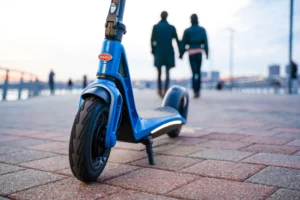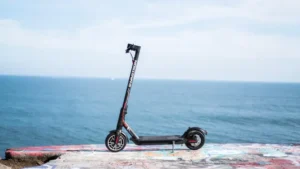As battery-powered scooters, or electric scooties, gain popularity, it’s essential for riders to understand the laws and regulations governing their use.
These rules ensure safety, standardization, and environmental benefits. This guide provides an overview of the current legal landscape for battery scooties, helping you stay compliant and informed.
1. Licensing and Registration
Driver’s License: Depending on the country and region, the requirement for a driver’s license to operate an electric scooty can vary. In many places, low-speed electric scooters (usually with a top speed of 25 km/h or less) may not require a driver’s license, while higher-speed models do.
Registration: Similar to traditional vehicles, electric scooties often need to be registered with the local transport authority. This process includes providing proof of ownership, a valid identification, and sometimes an inspection certificate. Check with your local Department of Motor Vehicles (DMV) or equivalent authority for specific requirements.
2. Insurance
Mandatory Insurance: In many regions, it is mandatory to have insurance coverage for your electric scooty. This typically includes third-party liability insurance to cover any damage or injury caused to others in the event of an accident.
Optional Coverage: Additional coverage options, such as comprehensive insurance, can protect against theft, vandalism, and damage to your scooty. While not always mandatory, these can provide peace of mind and financial protection.
3. Safety Standards
Helmet Laws: Most regions require riders to wear helmets while operating an electric scooty. This law is crucial for safety, as it helps reduce the risk of head injuries in the event of an accident.
Vehicle Specifications: Electric scooties must meet specific safety standards set by regulatory bodies. These standards can include requirements for lighting (headlights, taillights, turn signals), braking systems, and tire quality. Ensure that your scooty is compliant with these standards to avoid legal issues and ensure safety.
4. Speed Limits and Road Use
Speed Limits: Many regions have set speed limits for electric scooties. Typically, low-speed models are restricted to 25 km/h, while higher-speed variants can go up to 45 km/h or more, depending on local laws.
Road and Lane Use: Electric scooties are often restricted to certain types of roads and lanes. In many urban areas, they can be used in bike lanes or dedicated scooter lanes. Riding on highways or major roads is generally prohibited for low-speed models.
5. Age Restrictions
Minimum Age: There are often minimum age requirements for operating an electric scooty. For low-speed models, this can be as young as 14 or 16 years old, while higher-speed models might require the rider to be 18 or older.
6. Environmental Regulations
Emissions Standards: While electric scooties produce no tailpipe emissions, manufacturing and battery disposal are subject to environmental regulations. Manufacturers must comply with standards that reduce the environmental impact of production and promote recycling.
Battery Disposal and Recycling: Regulations often mandate proper disposal and recycling of electric scooter batteries. Riders should follow local guidelines for recycling old batteries to prevent environmental harm and support sustainable practices.
7. Parking and Storage
Parking Regulations: Just like traditional vehicles, electric scooties are subject to parking regulations. In many cities, there are designated parking areas for two-wheelers. Illegal parking can result in fines or the scooty being impounded.
Public Charging Stations: With the growth of electric vehicles, public charging stations are becoming more common. Some regions have regulations in place to ensure these stations are accessible and properly maintained. Riders should familiarize themselves with the locations and rules governing the use of public charging infrastructure.
8. Compliance and Penalties
Non-Compliance Penalties: Failing to comply with local laws and regulations can result in fines, impoundment of the vehicle, or even license suspension. It’s crucial to stay informed about the rules in your area to avoid these penalties.
Regular Updates: Laws and regulations regarding electric vehicles are continually evolving. Staying updated with the latest changes through local transport authorities, news sources, or community groups can help you remain compliant and informed.
Conclusion
Navigating the legal landscape of battery scooties is essential for safe and lawful riding. From licensing and registration to safety standards and environmental regulations, understanding these laws ensures you can enjoy the benefits of electric mobility without facing legal issues.
Always check with your local authorities for the most current and relevant regulations, and ride responsibly. By staying informed and compliant, you contribute to safer roads and a cleaner environment.



